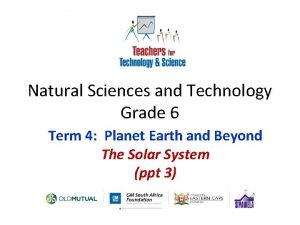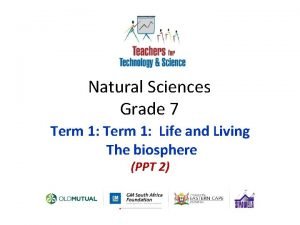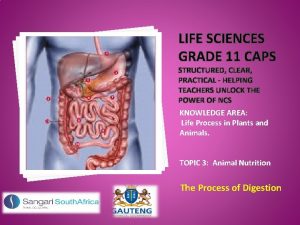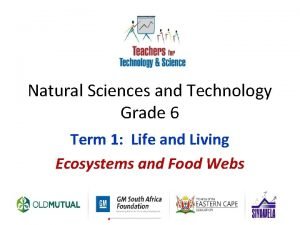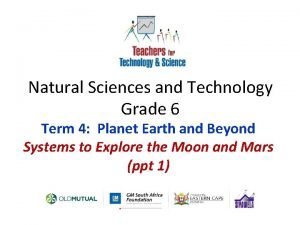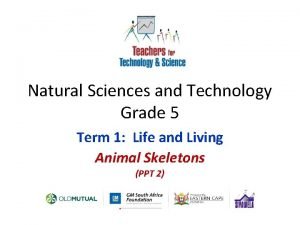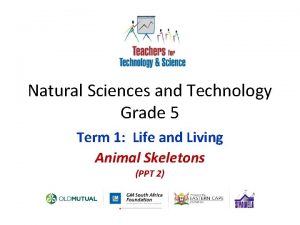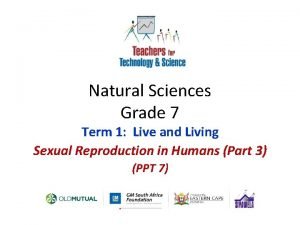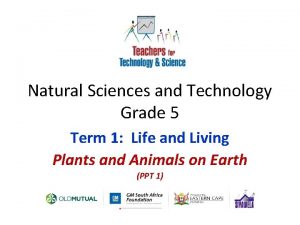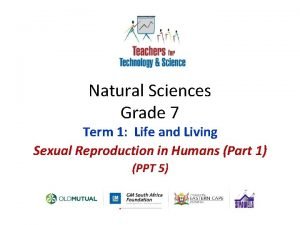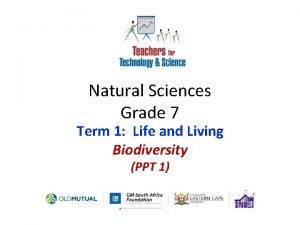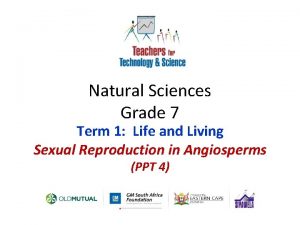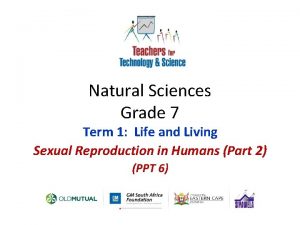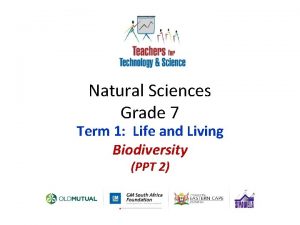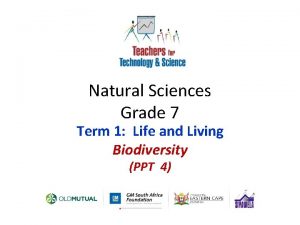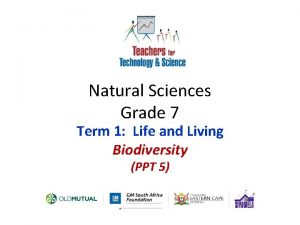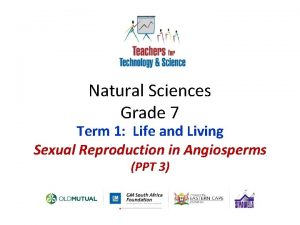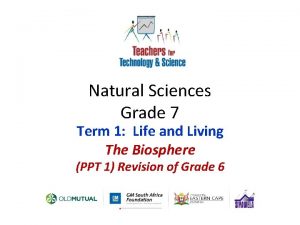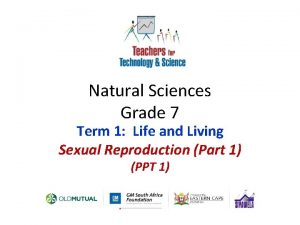Natural Sciences Grade 7 Term 1 Life and















- Slides: 15

Natural Sciences Grade 7 Term 1: Life and Living The biosphere (PPT 4)

Topic 1 The Biosphere Requirements for sustaining life Gr 7 Natural Sciences – Term 1, Topic 1

Factors needed for survival 5 Main factors – • • • Energy Gases Water Soil Favourable temperatures Gr 7 Natural Sciences – Term 1, Topic 1

Energy • The sun releases heat energy and light energy. • Heat energy in the sun’s rays warms up the lithosphere, hydrosphere and the atmosphere. • Light energy is used by green plants to – - make food for living make food to grow store food for future use Gr 7 Natural Sciences – Term 1, Topic 1

Energy • Animals eat the plants and use the stored energy to build their own bodies and to live. Gr 7 Natural Sciences – Term 1, Topic 1

Energy Gr 7 Natural Sciences – Term 1, Topic 1

Gases • The atmosphere contains air. • Air is not a gas, but a mixture of several gases. • Three of these gases are important for life: - carbon dioxide nitrogen oxygen Gr 7 Natural Sciences – Term 1, Topic 1

The main gases in the atmosphere Carbon dioxide 0% Argon 1% All other gases 1% Oxygen 21% Nitrogen 77% Gr 7 Natural Sciences – Term 1, Topic 1

Carbon dioxide (CO 2) • • • Carbon (not carbon dioxide) is found in foods like sugars, fats and meat. Carbon is present in the atmosphere as a gas called carbon dioxide. Carbon dioxide is the waste product of respiration in animals. Humans get rid of carbon dioxide by breathing it into the air. During photosynthesis, plants take in carbon dioxide and release oxygen. Gr 7 Natural Sciences – Term 1, Topic 1

Oxygen (O 2) • • Oxygen is released during the process of photosynthesis. Oxygen is present in the air that we breath, in other words, it is important for respiration. Our cells use the oxygen to release the energy from the food that we eat so that it can be used by our bodies. It makes up 21% of the air. Gr 7 Natural Sciences – Term 1, Topic 1

Nitrogen • • • Nitrogen makes up 78% of the atmosphere. It is used by organisms to make protein. The human body needs protein to develop muscles, brain tissue, hair and skin. Most living things cannot use nitrogen as a gas; plants make protein using the nitrogen in the soil. Animals get their proteins from the food that they eat. Gr 7 Natural Sciences – Term 1, Topic 1

Water • • • Nutrients dissolve in water and gets taken up by the roots of plants in the soil. Animals get nutrients when they eat plants. When drinking water, the animals’ bodies absorb the vitamins, minerals and other nutrients contained in their food. Plants will wilt without sufficient water. Humans will dehydrate without sufficient water. Water is important for photosynthesis, which is the only way that food can be made. Gr 7 Natural Sciences – Term 1, Topic 1

Soil • • • Plants need soil to grow. Soil provides plants with water, it contains nutrients and it anchors the plants. Soil contains living organisms and non-living elements, but the soil itself is non-living. Animals need plants to make their food. Soil is also important for the welfare of humans. Gr 7 Natural Sciences – Term 1, Topic 1

Favourable temperature • • Living things need a favourable temperature range in which to live. Earth’s temperature ranges between -50 degrees celsius to about 50 degrees celsius. The temperature will affect the phases of water in an area, for example – frozen water in the Arctic and Antarctic. Hot areas will have high humidity (Durban) and high evaporation of water from dams and lakes. Gr 7 Natural Sciences – Term 1, Topic 1

. Gr 7 Natural Sciences – Term 1, Topic 1
 Grade 6 natural science term 4
Grade 6 natural science term 4 Grade 6 natural science
Grade 6 natural science Life and living grade 7 resources
Life and living grade 7 resources Stored solar energy grade 7
Stored solar energy grade 7 Natural science grade 7 lesson plans term 3
Natural science grade 7 lesson plans term 3 Human sciences vs natural sciences tok
Human sciences vs natural sciences tok Grade 11 animal nutrition
Grade 11 animal nutrition Grade 7 properties of materials
Grade 7 properties of materials Natural science grade 7 term 2
Natural science grade 7 term 2 Different ecosystems grade 6
Different ecosystems grade 6 Natural science and technology grade 6 lesson plans term 4
Natural science and technology grade 6 lesson plans term 4 Natural science and technology grade 4 practical tasks
Natural science and technology grade 4 practical tasks Animal skeletons grade 5
Animal skeletons grade 5 Animal skeletons grade 5
Animal skeletons grade 5 Natural science grade 7 practical tasks term 1
Natural science grade 7 practical tasks term 1 Plants and animals on earth grade 5
Plants and animals on earth grade 5
